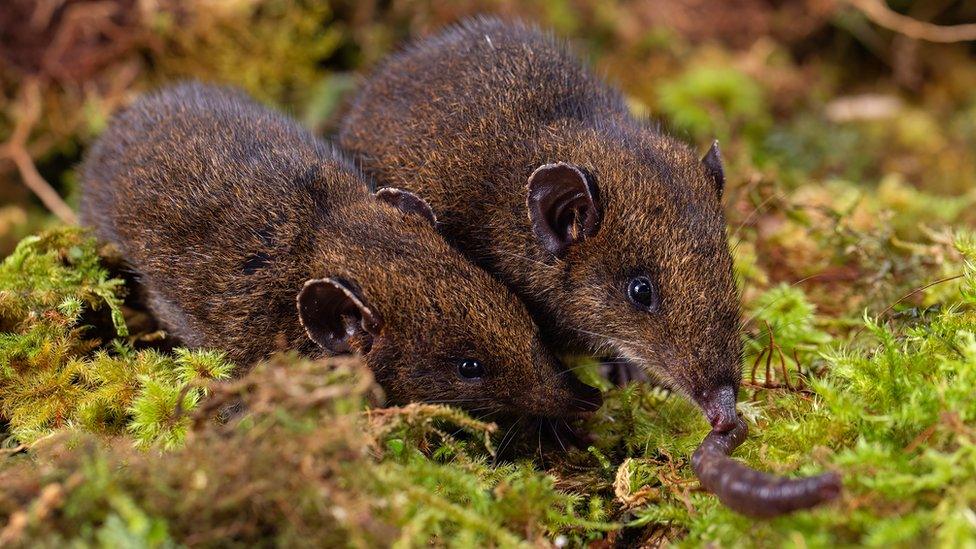Soft-furred hedgehog: Five new species discovered
- Published
- comments

Scientists have identified five new species of soft-furred hedgehogs from Southeast Asia.
The research team analysed DNA and physical characteristics to describe two completely new species and move three subspecies to the level of species.
These hedgehogs are different to the spiky ones we usually see because they are softer and furry.
This new discovery shows how even in well-studied animal groups, like mammals, there is still more to be uncovered.
How did they discover new species?
The five new species belong to a group of soft-furred hedgehogs called lesser gymnures, that live in Southeast Asia and before it was thought there were only two species.
The study which made the discovery used modern techniques to examine the hedgehog specimens from museum collections.
The team looked at 232 physical specimens and 85 tissue samples for genetic analysis from across the entire soft-furred hedgehog group.
The results confirmed that there were then five new species.
The team is excited by the discovery because it shows there is still so much to learn about the natural world.
"It might be surprising for people to hear that there are still undiscovered mammals out there. But there is a lot we don't know - especially the smaller nocturnal animals that can be difficult to tell apart from one another," said Melissa Hawkins, curator of mammals at The National Museum of National History, in the US.
Facts about soft-furred hedgehogs
Soft-furred hedgehogs are small mammals, but unlike the rest of the hedgehog family they are furry rather than spiky.
Arlo Hinckley, lead author of the study, says without the spiky spines, they look a bit more like a mix of a mouse and a shrew with a short tail.
These new species are active in the day and night and enjoy eating a diverse mix of insects and some fruits.
"Based on the lifestyles of their close relatives and field observations these hedgehogs likely nest in hollows and take cover while foraging among tree roots, fallen logs, rocks, grassy areas, undergrowth and leaf litter," says Hinckley.
- Published26 November 2015
- Published24 November 2017
- Published21 September 2023
